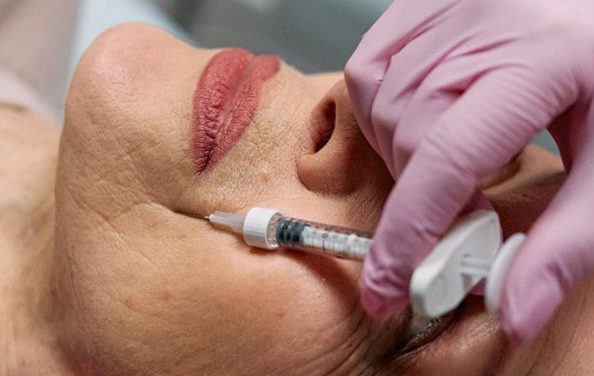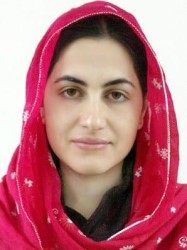Age-Defying Confidence: Understanding Nonsurgical Cosmetic Procedures for Seniors

Collaborative Post
‘Ageing is a fact of life, looking your age is not’ Dr. Howard Murad
Age-related skin changes start in 30s, and by 40s, they are quite evident. The low estrogen levels of menopause mean decreased collagen production, resulting in skin thinning, loss of elasticity and the appearance of fine lines and wrinkles. Although ageing is inevitable, you can defy it with a good skincare routine, balanced diet and cosmetic procedures. Here we list some of the top nonsurgical cosmetic procedures for women.
Botox injections
This is one of the non-surgical cosmetic procedures for the face, aimed at addressing wrinkles and fine lines in the skin. The injections contain botulinum toxin, which targets the neuromuscular junctions. Under its influence, the neural signal from nerve endings to muscles is blocked. This causes the facial muscles to relax and ease out frown lines and wrinkles. This is a day procedure with minimal discomfort and no downtime.
Several muscle groups can be targeted in a single session. The desired effect usually comes in a few days, lasts 3 to 6 months, and requires repeated sessions. Eventually, the facial muscles train themselves to contract less and the treatment sessions can then be spaced out.
Laser skin resurfacing
One of the many effective non-invasive facial treatments is laser peel or laser skin resurfacing. The laser shots vaporise the epidermis, the superficial skin layer, and stimulate the dermis, the deeper skin layer, to produce more collagen. Deposition of this newly formed collagen in the skin gives it a firmer and smoother appearance.
The older skin peels off over a couple of weeks and the new rejuvenated skin replaces it. The treatment is very helpful in addressing fine lines, scars, age spots and discolouration. The skin remains sensitive for a couple of months and post-procedure recovery needs professional inputs in care and use of generous amounts of sunscreens and moisturisers.
Fat grafting
This is volume replacement therapy for areas of the body affected by loss of subcutaneous fat, thinning of skin and wrinkling. The technique uses your body’s own fat tissue as a filler agent. The donor site is usually the areas with excess, unwanted fats like the tummy, inner thighs and buttocks. The harvested fat is then injected into parts of the body that need contouring.
Fat grafting is primarily used for areas of the face and hands to add volume to the ageing skin. In addition, the labia fat transfer procedure is used effectively by intimate aestheticians for labial puffing. Moreover, for recontouring of breasts and buttocks, autologous fat transfer is a natural alternative option to synthetic implants.
Thread lifts
This aesthetic technique addresses skin ageing by placing temporary sutures to produce a subtle yet visible lift of the saggy skin. This is the best non-surgical facelift for people over 60 as an alternative to surgical face and neck lifts, where one has to go under the knife. The areas around the cheeks, jaws, neck and eyes are commonly treated.
Thread lifts produce instant results by pulling back the skin and initiating a healing response, leading to more collagen production by skin cells, making the skin even firmer. The results are subtle and more natural looking but short-lived compared to surgical facelift procedures.
In conclusion
Leading a stress-free life, avoiding excessive sun exposure, getting a good night’s sleep and healthy eating all promote youthful complexion. You can’t combat ageing altogether, but you can slow its acceleration with a good skincare routine.
Before opting for a cosmetic procedure, detail your specific requirements and expectations with your aesthetician. Listen to your provider, as some of these procedures may not suit you, depending on your health conditions.
About the author
 Dr. Jehan Ara is a highly qualified consultant obstetrician and gynaecologist with a passion for writing and health education. She has more than 10 years of practical patient care experience. She is currently working as an Assistant Professor of Obstetrics and Gynaecology in a medical school and a clinical supervisor for post graduate residents of obstetrics and gynaecology in the affiliated teaching hospital. In addition to her clinical work, Dr. Jehan is also a passionate writer and educator. She regularly writes articles and blog posts on women’s health. She is committed to helping women understand their bodies and make informed decisions about their health.
Dr. Jehan Ara is a highly qualified consultant obstetrician and gynaecologist with a passion for writing and health education. She has more than 10 years of practical patient care experience. She is currently working as an Assistant Professor of Obstetrics and Gynaecology in a medical school and a clinical supervisor for post graduate residents of obstetrics and gynaecology in the affiliated teaching hospital. In addition to her clinical work, Dr. Jehan is also a passionate writer and educator. She regularly writes articles and blog posts on women’s health. She is committed to helping women understand their bodies and make informed decisions about their health.
This article is for information only. Please discuss your options with an expert.

